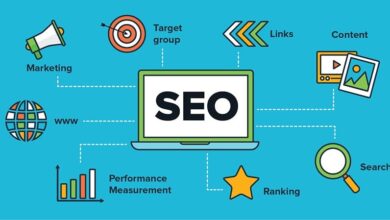Search Engine Marketing or Search Engine Optimization – Which one is best?
In the digital landscape, businesses have a multitude of marketing strategies to choose from to enhance their online presence and attract customers. Two popular methods that often come up in discussions are Search Engine Marketing (SEM) and Search Engine Optimization (SEO). While both approaches aim to improve a business’s visibility in search engine results, they differ in their strategies, benefits, and outcomes.
In this article, we will delve into the distinctions between SEM and SEO, exploring their benefits, objectives, budget considerations, results, target audience analysis, resource allocation, synergy, and integration. By understanding these aspects, businesses can make informed choices about which strategy, or combination thereof, is the most suitable for their specific needs and goals.
Defining SEM: Exploring the Benefits and Strategies of Paid Search Advertising
Search Engine Marketing (SEM) refers to paid search advertising, where businesses pay to display their ads on search engine results pages (SERPs). One of the primary benefits of SEM is its ability to generate immediate visibility and targeted traffic. Through strategies such as pay-per-click (PPC) campaigns, businesses can bid on relevant keywords and create compelling ad copy to attract potential customers. SEM allows for precise audience targeting, geographic segmentation, and ad scheduling, providing businesses with control and flexibility in reaching their desired audience. With SEM, businesses can quickly boost their online presence, drive traffic to their website, and increase conversions.
Unveiling SEO: Leveraging Organic Search to Drive Long-Term Results
Search engine optimization (SEO) focuses on improving the organic visibility of a website in search engine results. Unlike SEM, SEO does not involve paid advertising, but uses various techniques to optimize the content, structure and backlink profile of a website, such as multilingual seo service, in order to rank better in organic search results. The main advantage of SEO is its long-term sustainability. By optimizing for relevant keywords, producing high-quality content and improving the user experience, companies can attract organic traffic, establish credibility and maintain a consistent online presence. SEO is a cost-effective strategy that can generate continuous, targeted traffic over time and strengthen a company’s online reputation.
Setting Clear Objectives: Identifying Your Business Goals and Priorities
When choosing between SEM and enterprise SEO services, it is crucial to define your business goals and priorities. Consider what you want to achieve with your online marketing efforts. If your objective is to drive immediate traffic, conversions, or promote time-sensitive campaigns, SEM may be the preferred choice. On the other hand, if your goal is to establish long-term organic visibility, build brand authority, and generate sustainable organic traffic, SEO should be a primary consideration. Understanding your business objectives will help guide your decision-making process and align your strategy with your desired outcomes.
Budget Considerations: Evaluating the Cost-Effectiveness of SEM and SEO
Budget is a critical factor when considering SEM and SEO. SEM involves paying for advertising space, and costs can quickly accumulate depending on keyword competitiveness, click-through rates, and industry competition. While SEM provides immediate results, it requires a continuous investment to maintain visibility. SEO, on the other hand, requires an initial investment in optimizing your website and ongoing efforts to create valuable content and build backlinks. While SEO may take longer to generate results, it can be a more cost-effective long-term solution, as organic traffic does not require ongoing payment for every click or impression.
Immediate vs. Long-Term Results: Weighing the Speed and Sustainability Factors
Another aspect to consider is the timeline for results. SEM offers instant visibility and immediate results, as ads are displayed as soon as the campaign is active. It is an effective strategy for time-sensitive promotions or when businesses need immediate traffic and conversions. However, once an SEM campaign is paused or the budget is exhausted, the visibility and traffic decrease. In contrast, SEO takes time to yield results, as it involves optimizing a website, creating quality content, and building authority over time. However, once a website gains organic visibility, the traffic generated can be sustained with ongoing SEO efforts, providing long-term sustainability.
Target Audience and Competition Analysis: Assessing Market Dynamics for Decision-Making
Understanding your target audience and analyzing the competitive landscape is essential when selecting between SEM and SEO. SEM allows for precise audience targeting, which can be advantageous if your target audience is well-defined and you want to reach them with specific ad messaging. It also enables you to evaluate competition and adjust your bidding strategy accordingly.
SEO, on the other hand, focuses on optimizing your website to cater to a broader organic audience. Conducting thorough market research and competitor analysis will help determine the level of competition, keyword competitiveness, and the feasibility of achieving visibility through organic search. Consider the preferences and behavior of your target audience to determine which strategy aligns better with your marketing goals.
Resource Allocation: Determining the Time and Effort Required for SEM and SEO
Both SEM and SEO require dedicated resources, including time and expertise. SEM requires ongoing monitoring, bid management, and ad copy optimization to maximize results. It demands continuous attention and adjustment to keywords, targeting, and ad performance. SEO, on the other hand, requires consistent efforts in optimizing website elements, creating valuable content, and building backlinks. It is a long-term commitment that necessitates regular monitoring, analysis, and updates. Assess your available resources, internal expertise, and capacity to allocate time and effort to each strategy. Consider whether you have the necessary skills in-house or if outsourcing to professionals is a more viable option.
Synergy and Integration: Finding the Right Balance between SEM and SEO Strategies
While SEM and SEO have their distinct advantages, combining both strategies can create a powerful synergy. The synergy between SEM and SEO can be achieved by leveraging the strengths of each strategy to optimize overall online visibility. For example, running an SEM campaign can provide immediate visibility and traffic while simultaneously investing in SEO efforts for long-term organic growth. By strategically integrating both strategies, businesses can maximize their online presence, increase brand exposure, and capture a broader audience. Consider how the two approaches can complement each other to achieve your marketing objectives.
Making an Informed Choice: Factors to Consider When Selecting SEM, SEO, or Both
When making an informed choice about whether to opt for SEM, SEO, or both, several factors should be taken into account. These include your business’s unique needs, goals, budget, timeline, target audience, and available resources. It is crucial to carefully evaluate the advantages and disadvantages of each strategy and determine how well they align with your marketing objectives. Consider the immediacy of results, the long-term sustainability of the chosen approach, budgetary considerations, the dynamics of your target audience, resource allocation, and the potential synergy that can be achieved by combining SEM and SEO. For small business owners navigating these decisions, working with a business coach that understands SEO can provide invaluable guidance, ensuring your strategy is both effective and aligned with your overall business goals.
Regularly monitoring and analyzing the performance of your chosen strategy is vital to ensure data-driven decision-making and to adapt your approach as necessary in order to optimize results. When seeking guidance in this decision-making process, the expertise of an enterprise SEO company can be invaluable.
Conclusion: SEM Vs SEO
Selecting between SEM and SEO, or finding the right balance between the two, requires careful consideration of various factors. Understanding the differences, benefits, and strategies of SEM and SEO is crucial for making informed choices that align with your business goals and priorities. By defining objectives, evaluating budgets, considering short-term versus long-term results, analyzing target audience dynamics, allocating resources effectively, seeking synergy, and making data-driven decisions, businesses can implement the most suitable online marketing strategy to maximize their online visibility, attract customers, and drive sustainable growth.
Rating:





